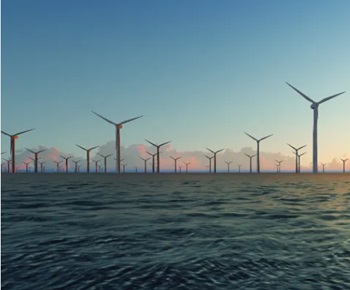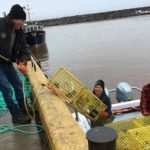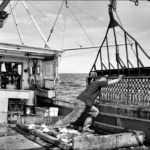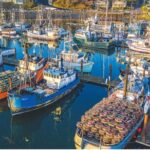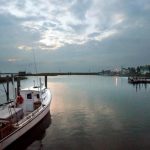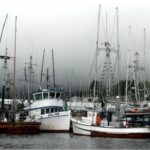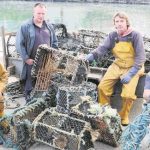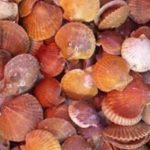Tag Archives: floating turbines
Maine’s massive “floating wind” folly — my report
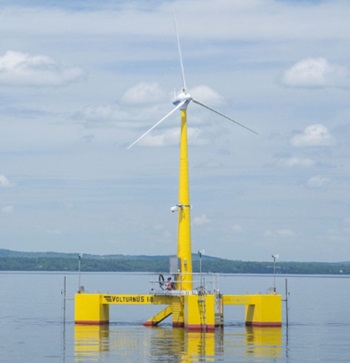 Below is my Executive Summary, followed by the latest bad news on this ongoing silly saga. This report examines several fundamental aspects of the State of Maine’s offshore wind development plan. It is divided into two parts. Part 1 examines certain economic issues, such as feasibility, cost, and progress to date. Part 2 explores the proposed development as it relates to the entire Gulf of Maine, namely because the project has not advanced to the point where the State of Maine’s responsibilities have been defined. The offshore wind plan calls for development of 3,000 MW of generating capacity, an amount that is roughly double Maine’s average electricity usage. The viability of Maine’s offshore wind plan depends entirely on the massive transformation of the state’s grid from fossil fuel use to electrification. It is clear that the citizens of Maine have not been informed of this vast transformation requirement. They have certainly not approved it. more, >>CLICK TO READ<< 09:34
Below is my Executive Summary, followed by the latest bad news on this ongoing silly saga. This report examines several fundamental aspects of the State of Maine’s offshore wind development plan. It is divided into two parts. Part 1 examines certain economic issues, such as feasibility, cost, and progress to date. Part 2 explores the proposed development as it relates to the entire Gulf of Maine, namely because the project has not advanced to the point where the State of Maine’s responsibilities have been defined. The offshore wind plan calls for development of 3,000 MW of generating capacity, an amount that is roughly double Maine’s average electricity usage. The viability of Maine’s offshore wind plan depends entirely on the massive transformation of the state’s grid from fossil fuel use to electrification. It is clear that the citizens of Maine have not been informed of this vast transformation requirement. They have certainly not approved it. more, >>CLICK TO READ<< 09:34
Reagan Paul: Hope Floats, But Not for UMaine’s VolturnUS Floating Offshore Wind Platform
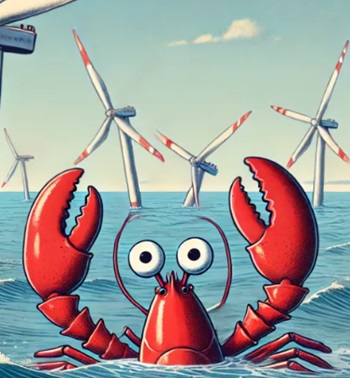 Last year, LD 1895 “An Act Regarding the Procurement of Energy from Offshore Wind Resources” passed, which got the ball rolling on Maine’s push for offshore wind port. The port will be the culmination of a more than decade-long taxpayer-funded effort to develop a floating offshore wind research array project, with the goal of eventually turning the Gulf of Maine into an industrialized wind farm. The viability of this technology was to be tested through an array of 12 wind turbines using the patented VolturnUS concrete, semi-submersible floating offshore wind turbine platform design created by Dr. Habib Dagher of the University of Maine, over the last decade. The Portland Press Herald conceded that this floating offshore wind research array project is too cost-prohibitive without an almost billion-dollar dedicated wind port facility off the coast of Maine, which means that a port must be constructed before the state can even move forward with the research array outlined in LD 1895. Enter Sears Island. more, >>CLICK TO READ<< 07:46
Last year, LD 1895 “An Act Regarding the Procurement of Energy from Offshore Wind Resources” passed, which got the ball rolling on Maine’s push for offshore wind port. The port will be the culmination of a more than decade-long taxpayer-funded effort to develop a floating offshore wind research array project, with the goal of eventually turning the Gulf of Maine into an industrialized wind farm. The viability of this technology was to be tested through an array of 12 wind turbines using the patented VolturnUS concrete, semi-submersible floating offshore wind turbine platform design created by Dr. Habib Dagher of the University of Maine, over the last decade. The Portland Press Herald conceded that this floating offshore wind research array project is too cost-prohibitive without an almost billion-dollar dedicated wind port facility off the coast of Maine, which means that a port must be constructed before the state can even move forward with the research array outlined in LD 1895. Enter Sears Island. more, >>CLICK TO READ<< 07:46

Seacoast fishermen say they don’t support wind turbines in Gulf of Maine
A federal group wants to put wind turbines in the Gulf of Maine, but some Seacoast fishermen said they don’t want them. On Wednesday night, several fishermen said they can’t get on board with the idea of wind turbines in the Gulf of Maine, but the Bureau of Ocean Energy Management said they’re trying to be as safe as possible with this potential project. The proposal would allow the state of Maine to build 12 floating turbines about 30 miles off the coast, which some fishermen said would cut them off from where they fish. The project, hoping to protect the endangered North Atlantic Right Whale while supporting the Biden administration’s goal to deploy 30 gigawatts of offshore wind by 2030, is on track to be the first floating offshore wind farm in the United States, but more approvals are still needed. Video, more, >>CLICK TO READ<< 16:38
Floating offshore wind experts say they want to coexist with Maine lobstermen, but lobstermen say no thanks
 Lobstermen asked pointed questions Thursday about a planned offshore floating wind array that they fear will take away fishing grounds and potentially disrupt the species they rely on to make a living. “Offshore wind overall we have a lot of issues with,” Virginia Olsen, political director of the Maine Lobstering Union said. “We know it will be industrializing our ocean and as fishermen we just don’t want to see that happen.” During the Thursday presentation, state officials and consultants working on the floating array emphasized they want to work toward “coexistence” between the new technology and the fishing industry. But that didn’t sit well with some of the lobstermen, who said they don’t want to co-exist with the turbines. more, >>click to read<< 06:50
Lobstermen asked pointed questions Thursday about a planned offshore floating wind array that they fear will take away fishing grounds and potentially disrupt the species they rely on to make a living. “Offshore wind overall we have a lot of issues with,” Virginia Olsen, political director of the Maine Lobstering Union said. “We know it will be industrializing our ocean and as fishermen we just don’t want to see that happen.” During the Thursday presentation, state officials and consultants working on the floating array emphasized they want to work toward “coexistence” between the new technology and the fishing industry. But that didn’t sit well with some of the lobstermen, who said they don’t want to co-exist with the turbines. more, >>click to read<< 06:50
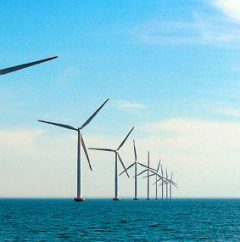
Fishing groups wary of rapid offshore wind development plans
As offshore wind moves up the coast of New England, efforts are underway to make sure the region’s fishing interests have a seat at the table early in project development. An alliance of industry and academic stakeholders is promoting the need for research and best practices as offshore wind takes hold in waters where fishing has long been an economic anchor. Fishing groups have several concerns about the potential for boating obstacles and ecological impacts. A dearth of research makes the industry hesitant as it prepares for a slew of projects that could overwhelm their operations. Above all, fishing stakeholders want to be included from the start of wind project development. >click to read< 09:07
Bill to move Monhegan wind power project draws crowd to legislative hearing
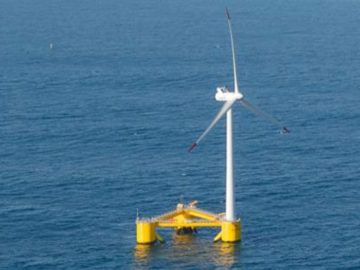 Lawmakers heard passionate, conflicting testimony Tuesday from dozens of people on a bill aimed at moving a nationally significant wind energy test site farther from Monhegan Island. Supporters said views of two massive floating turbines would jeopardize tourism, lobster fishing, migrating birds and the sense of serenity associated with Monhegan’s wild beauty. Some said island residents were being bullied and divided by the University of Maine and the partners of Maine Aqua Ventus, a project that is testing new technology for offshore wind turbines about 3 miles from the island. The project initially promised a small, brief test, but has now expanded it beyond anyone’s expectations. Opponents of the bill, which would move the test site at least 7 miles farther out to sea, said it is unneeded and unwelcome, adding that it would short-circuit the process by which islanders are evaluating the project’s potential benefits. Both sides said much is at stake. But representatives of the Maine Lobstering Union, which represents 500 fishermen, said wind power has no place on the Maine coast. Other lobstermen, though, spoke in favor of the turbines. Mary Weber, whose husband, Matt, fishes around the island, said they didn’t think the turbines would deter tourists, and might even draw a new set of visitors interested in clean energy. click here to read the story 15:30
Lawmakers heard passionate, conflicting testimony Tuesday from dozens of people on a bill aimed at moving a nationally significant wind energy test site farther from Monhegan Island. Supporters said views of two massive floating turbines would jeopardize tourism, lobster fishing, migrating birds and the sense of serenity associated with Monhegan’s wild beauty. Some said island residents were being bullied and divided by the University of Maine and the partners of Maine Aqua Ventus, a project that is testing new technology for offshore wind turbines about 3 miles from the island. The project initially promised a small, brief test, but has now expanded it beyond anyone’s expectations. Opponents of the bill, which would move the test site at least 7 miles farther out to sea, said it is unneeded and unwelcome, adding that it would short-circuit the process by which islanders are evaluating the project’s potential benefits. Both sides said much is at stake. But representatives of the Maine Lobstering Union, which represents 500 fishermen, said wind power has no place on the Maine coast. Other lobstermen, though, spoke in favor of the turbines. Mary Weber, whose husband, Matt, fishes around the island, said they didn’t think the turbines would deter tourists, and might even draw a new set of visitors interested in clean energy. click here to read the story 15:30






